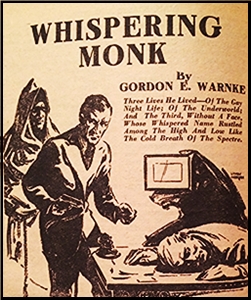Thu 10 Jan 2019
Reviewed by Jonathan Lewis: CANON CITY (1948).
Posted by Steve under Crime Films , Reviews[5] Comments
CANON CITY. Eagle-Lion Films, 1948. Scott Brady, Jeff Corey, Whit Bissell, Stanley Clements, Charles Russell, DeForest Kelley, Ralph Byrd, Mabel Paige, (Warden) Roy Best as himself. Narrator: Reed Hadley. Cinematography: John Alton. Screenwriter-Director: Crane Wilbur.
Film noir aficionados looking for a movie that has previously escaped their attention should look no further than Canon City, a surprisingly effective crime film put out by Eagle-Lion Films. Written and directed by Crane Wilbur, who also penned both the story and script for He Walked By Night, also from 1948 and reviewed here, Canon City notably features stark black and white cinematography by John Alton, who is perhaps best known today for his ongoing collaborations with director Anthony Mann.
Traversing genres, the semi-documentary film named after the Colorado city where the action takes place is simultaneously a work of social realism in the 1930s Warner Brothers mold, a prison break movie, and a home invasion thriller.
Scott Brady, in his first leading role, portrays Jim Sherbondy, a doomed protagonist if there ever were one. As teenager who got mixed up with a bad crowd and whose subsequent criminal path led him to a lengthy sentence of incarceration for murdering a cop, Sherbondy is now doing his best to reform himself within the confines of the prison walls. But trouble seems to follow him wherever he goes. Other convicts planning a prison break exploit his good reputation with the guards and snooker him into becoming a key player in a prison break.
Leading the pack of thieves and murderers is Carl Schwartzmiller. Jeff Corey takes this role and lends it an infectious energy. We know his character is a miscreant, yet in Corey’s more than capable hands, he fascinates us with his sardonic wit and fatalistic worldview as much as repels us. Look for the diabolically tense scene wherein Schwartzmiller takes an elderly couple hostage in their home. The camera follows the old woman, carrying both a hammer and an orange, as she slowly creeps up on the criminal ringleader, hoping to smash his skull. Schwartzmiller turns around and notices her presence, asking what she has with her. She offers him an orange. He gladly accepts and begins to peel it.
A trifling scene perhaps. But one that only reinforces my belief that Corey remains one of the great character actors of that era.
